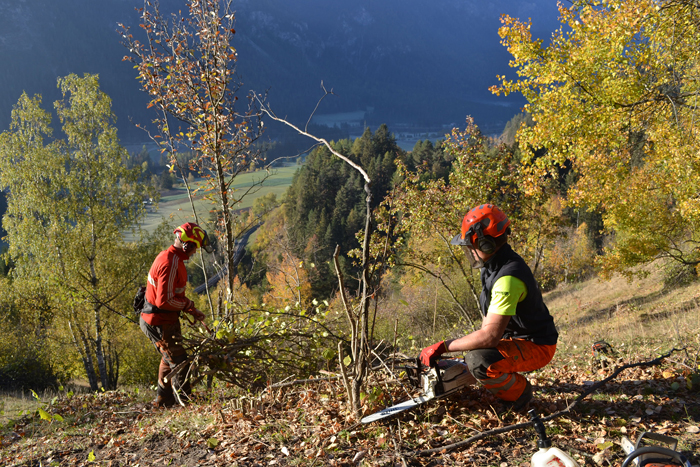Case Study
Graubünden’s parks create space for animals and plants
Contact name
Elisa Strecke
Institution name
Swiss Parks Network
Region & country
Graubünden, Switzerland
Summary
As part of the Green Infrastructure Pilot Project, the Parks in Graubünden have worked closely with the Canton on 18 issues related to habitat status and improvement needs.

Green infrastructure project
Verein Parc Ela
Background of the project
According to the Swiss Biodiversity Strategy, the green infrastructure, composed of strictly protected areas and areas of ecological connectivity, forms the essential basis for the preservation of the biodiversity in Switzerland.
Preservation of green infrastructure is a crucial need, which needs to be addressed with different measures. First of all, a prior analysis of the current status is essential. Furthermore access to data and information as well as expert/local knowledge are very important. Finally, a good cooperation between all concerend actors and a regular exchange of experiences (regional and national) is important to implement green infrastructure projects.
Solution and actions taken
With their vast spaces of high-quality natural areas, parks can significantly contribute to the development and preservation of essential infrastructure by networking local actors, training and communication measures, as well as through the work of volunteers.
Various concepts have been developed, such as the development of moor areas in the forest, the connection of water bodies, as well as action plans for abandoned upland areas. For example, Parc Ela and the Beverin Nature Park have shown how to promote biodiversity in deciduous woodland at the subalpine level.
Other institutions or parties involved
Governmental organisations, local farmers as well as consulting businesses mandated by the park for the analysis.
Results
Forest districts were able to implement first projects with the financial support from the parks. One year after completion of the green infrastructure project, three forest areas have already been revalued. Cooperation between the Canton, the farmers and the parks for the project has also been successful in dry environments. These actions allow both to clear in-growing areas and to promote their biodiversity.
Challenges
At the initiative of the parks and a challenging procedure, these concepts have been integrated into the revision of the cantonal forest master plan.
Lessons learned
Important prerequisites for the successful implementation of green infrastructure projects: Good planning; access to information and data; expert knowledge as well as local knowledge; good cooperation with all stakeholders; regular exchange of knowledge at various levels, human and financial resources; acceptance by the population.
Contact name
Elisa Strecke
Institution name
Swiss Parks Network